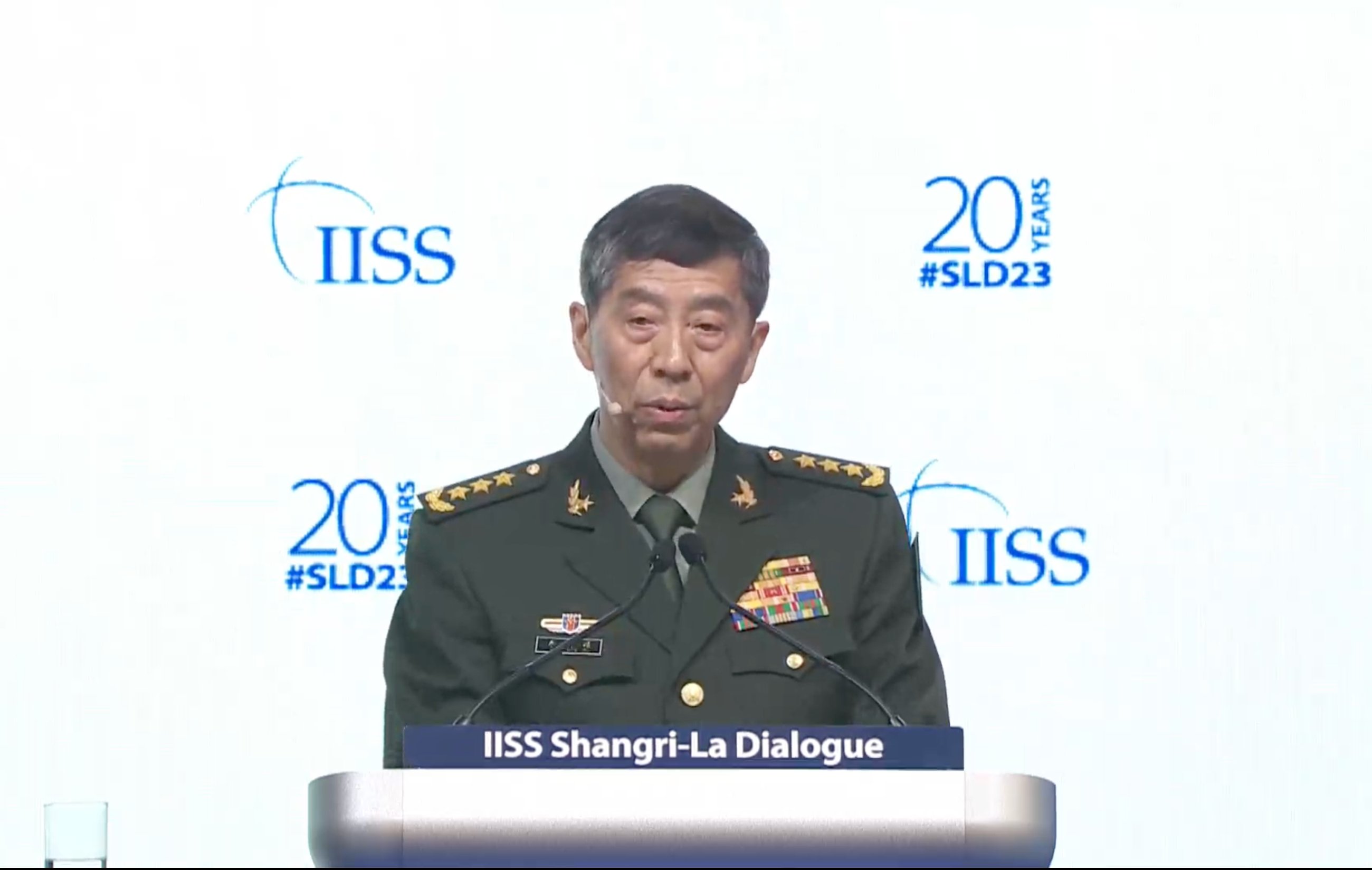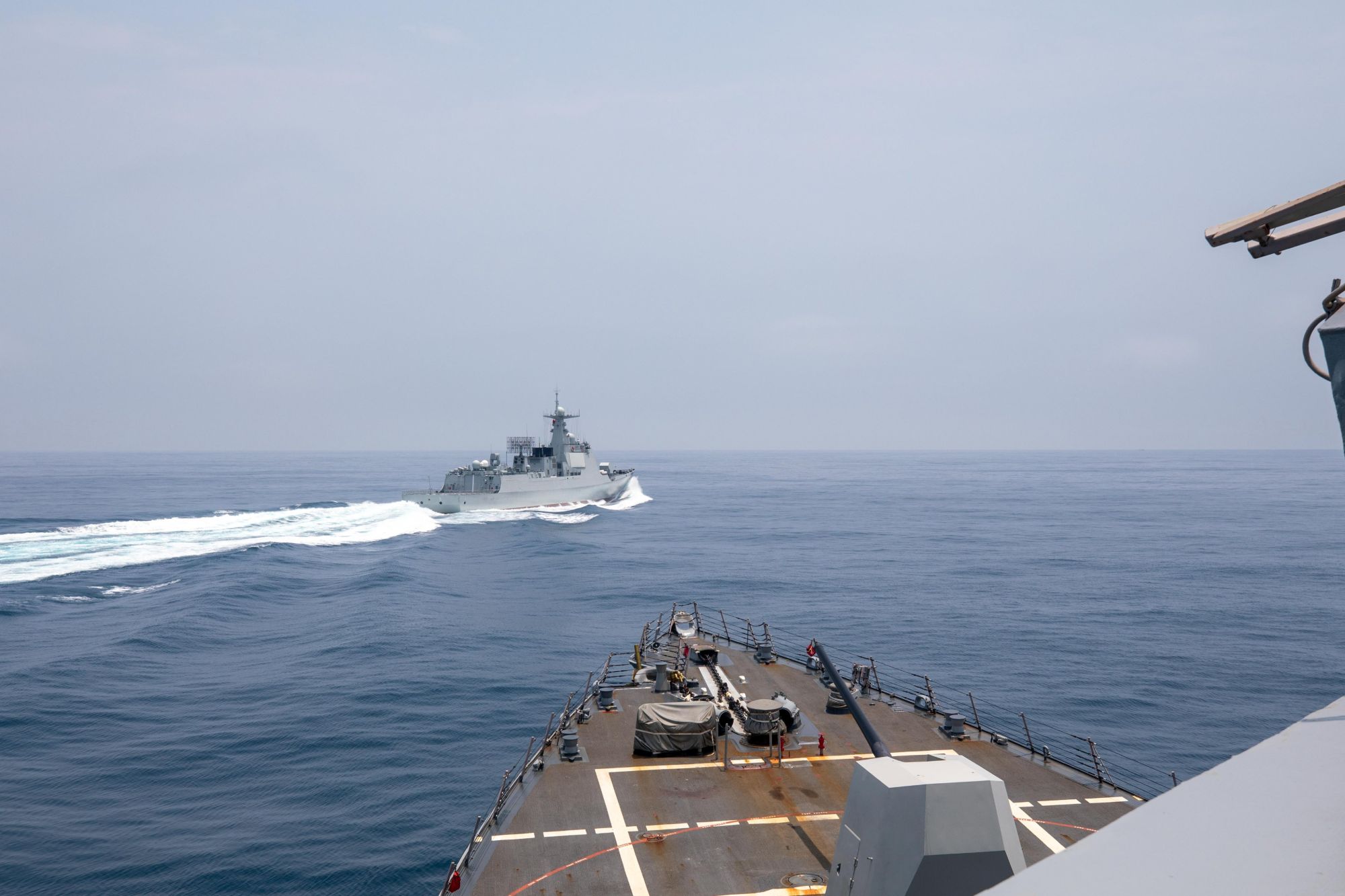Amid tensions escalating with the United States, Chinese Defense Minister Li Shangfu has asserted that a war with the United States would be an “unbearable disaster for the world” and emphasized the importance of both sides improving ties, which are “at a record low.”
Chinese Navy ‘Burgeons’ With Might & Muscle, US Navy Looks At Japan & South Korea To Counter The PLA Navy
Gen. Li Shangfu made the remarks during the Shangri-La Dialogue, a gathering of some of the top defense officials from across the world in Singapore, in his first such meeting since taking office as defense minister in March this year.
Calling for cooperation with Washington, Li said, “History has proven time and again that both China and the United States will benefit from cooperation and lose from confrontation.”
“China seeks to develop a new type of major-country relationship with the United States. As for the US side, it needs to act with sincerity, match its words with deeds, and take concrete actions together with China to stabilize the relations and prevent further deterioration,” he said emphatically.
During the three-day event, China refused to allow a meeting of Gen Li Shangfu with US Defense Secretary Lloyd Austin, which experts said could have “serious consequences.”
The US sanctioned the Chinese Defense Minister in 2018 for his alleged role in acquiring the Russian Su-35 fighter jet and S-400 air defense system.

While China’s refusal to allow a meeting was already a sticking point between the two states in the face of rising tensions and diplomatic alienation, a face-off between US and Chinese warships on the weekend near Taiwan further set the temperatures soaring between the two sides.
The US military announced on June 4 that its destroyer USS Chung-Hoon, and a Canadian frigate HSMC Montreal, were conducting a “routine” transit of the Taiwan strait when a Chinese warship Luyang III-class guided-missile destroyer, cut in front of the US vessel, coming within 150 yards (137 meters).
The statement added that Chung-Hoon maintained course and slowed to avoid a collision. The closest point of approach of the Chinese warship was 150 yards (137 meters), “and its actions violated the maritime ‘Rules of the Road’ of safe passage in international waters,” the statement noted.
A day after the incident, Li Shangfu remained unfazed at the Shangri La forum as he defended the PLA Navy for sailing a warship across the path of an American destroyer and Canadian frigate.
Photos were taken on the bridge of the USS Chung-Hoon (DDG 93) showing up-close the "Unsafe Maritime Interaction" in which the Chinese type 52 DDG Suzhou (132) maneuvered through the oncoming path of the American destroyer while it transited the Taiwan Strait. pic.twitter.com/TkX90d1gTV
— IntelWalrus (@IntelWalrus) June 5, 2023
Criticizing US Freedom of Navigation Operations (FONOPs), Li said China did not have any problems with “innocent passage” but that “we must prevent attempts that try to use that freedom of navigation (patrols), that innocent passage, to exercise hegemony of navigation.”
In response to Beijing’s expansive territorial claims and Li’s statement on the incident, US Defense Secretary Lloyd Austin said at the same forum that Washington would not “flinch in the face of bullying or coercion” from China and would continue routinely flying over and sailing through the Taiwan Strait to emphasize that they are international waters.
Meanwhile, the US Navy also released video footage of the incident, a “close shave,” as referred to by military watchers.
Video Footage Shows A ‘Close Shave’
On June 5, a video of what the US Navy described as an “unsafe interaction” between a Chinese vessel and a US destroyer in the Taiwan Strait was made public. In the video, a Chinese vessel is seen cruising across the Chung-Hoon’s course in the footage while the Chung-Hoon stays on course.
In the video, as seen below, a voice can be heard in English purportedly sending a radio message to the Chinese ship, warning against “attempts to limit freedom of navigation.” However, the exact wording is unclear because of the excessive noise of the wind in the background.
The #USNavy released a new video of the #PLA Navy destroyer cutting in front of the bow of the USS Chung-Hoon at high speed during a #TaiwanStrait transit.pic.twitter.com/ip3upqXZVs
— Indo-Pacific News – Geo-Politics & Military News (@IndoPac_Info) June 5, 2023
However, the Chinese Foreign Ministry was quick to rebuke American claims. Chinese Foreign Ministry Spokesperson Wang Wenbin told reporters on June 6, “The measures taken by the Chinese military are completely reasonable, legitimate, professional, and safe.”
He added, “The US had caused trouble and provocation first, while China dealt with it in accordance with the law and regulations afterward.”
Going over and beyond the official statements made by Chinese officials, in an interaction with Reuters, Chinese military analyst Song Zhongping gloated that the “point-blank interception” showed off both the skills and “courage” of China’s navy.
The incident comes amid already tense ties between the two sides, especially in the wake of alleged Chinese aggression against Taiwan and its increasing assertiveness in the South China Sea. To challenge China’s growing influence in the region, the US has intensified its FONOPs and air patrol missions, besides seeking a bigger role in the region.

For instance, on April 10, the US Navy’s 7th Fleet issued a statement saying that the USS Milius, a guided-missile destroyer, sailed within 12 nautical miles of Mischief Reef in the Spratly Islands, referred to as the Nansha Islands in China, where Beijing has erected military structures to reinforce its claims in the region.
In late May, a Chinese J-16 fighter jet carried out an “unnecessarily aggressive” maneuver. It flew directly in front of a US Air Force reconnaissance aircraft’s nose over the South China Sea in international airspace.
With dangerous interceptions and maneuvers becoming a common practice, experts have warned that this could lead to a massive miscalculation and escalation between the two rival sides in the region.
- Contact the author at sakshi.tiwari9555 (at) gmail.com
- Follow EurAsian Times on Google News




